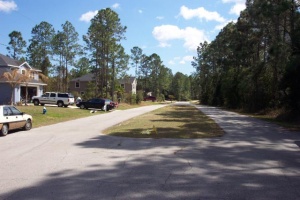Capricious Government Power vs. Property Owners’ Rights
An age old battle which property owners seem to be losing. Following its Ryan’s Landing loss, the City of Palm Coast government doesn’t seem to have learned its lesson.
 Palm Coast, Florida – March 5, 2009 – Fresh off its concession to Seagate in the Ryan’s Landing debacle (Politics is Like Theater), the City of Palm Coast has a new target in the ongoing battle of individual property rights vs. the public good (as perceived by our local government). If the city persists in following their present path, Palm Coast property owners and tax payers will surely be the losers, regardless of the outcome. This is the first of a series of articles about the upcoming battle.
Palm Coast, Florida – March 5, 2009 – Fresh off its concession to Seagate in the Ryan’s Landing debacle (Politics is Like Theater), the City of Palm Coast has a new target in the ongoing battle of individual property rights vs. the public good (as perceived by our local government). If the city persists in following their present path, Palm Coast property owners and tax payers will surely be the losers, regardless of the outcome. This is the first of a series of articles about the upcoming battle. -
You bought a Palm Coast lot, one of the 49,643 ¼ acre lots platted by ITT in 1973. The lot is in the neighborhood pictured above.
-
You did your due diligence, including verification that development rights had never been vacated.
-
Since your purchase, you have consistently been billed for property taxes and storm water management fees as owner of a developable lot.
-
In 2006 the City of Palm Coast issued a building permit for construction of a single-family home on your lot.
-
Because of changing economic conditions, you cancelled the building permit.
-
In 2007, the lot was assessed for $25,000.
-
When in 2008, you decided again to build; the city claimed that your lot was not part of the storm water management system, even though they continue to send bills for storm water management fees.
-
You are informed that the only way you could build on the lot is to devise a system to contain all storm water runoff from a 100-year flood event within the boundary of the lot. Of course this cannot be done on a 10,100 square foot lot. You are checkmated because someone changed the rules when you weren’t looking.
 The only thing that differentiates these lots is that at one time, ITT (the original developer of Palm Coast) decided to temporarily drop them from their current sales offering list. Some were wetland at the time but have reverted after drainage canals were dug. Some did not have roads and sewer installed at the time. Hence, they have been saddled with the designation "drop lots." Subsequently, several were sold to various developers. Many had homes built upon them (i.e. building permits were issued). The lot in question, 6 Llovera Place, is clearly on high ground (Look at the pine trees in the picture to the right). The owner is armed with engineering studies, and city initiated correspondence backing their claims.
The only thing that differentiates these lots is that at one time, ITT (the original developer of Palm Coast) decided to temporarily drop them from their current sales offering list. Some were wetland at the time but have reverted after drainage canals were dug. Some did not have roads and sewer installed at the time. Hence, they have been saddled with the designation "drop lots." Subsequently, several were sold to various developers. Many had homes built upon them (i.e. building permits were issued). The lot in question, 6 Llovera Place, is clearly on high ground (Look at the pine trees in the picture to the right). The owner is armed with engineering studies, and city initiated correspondence backing their claims. In 1986, David Lucas paid $975,000 for two residential oceanfront lots in Wild Dunes, located on a barrier island just north of Charleston. At the time, a single family home would have been allowed on each lot without any additional permits required by the S.C. Coastal Council. South Carolina subsequently passed a Beachfront Management Act which directed the Coastal Council to establish a “baseline” along the shoreline beyond which any homes were prohibited. Lucas filed suit claiming that ban on construction effected a taking of his property without just compensation. Appealing all the way to the US Supreme Court, Lucas won. The state had to purchase his property.
Saddled with the cost of owning two worthless oceanfront properties, the state changed its restriction, allowing them to sell the lots. Two multi-million dollar homes now occupy these worthless lots. And that’s the rest of the story (in honor of Paul Harvey).

Local Govt
Amazing in this day and age that property owners rights are subject to local government controls without compensation. cavet emptor.
More Amazing
I find it even more amazing in the case mentioned above, that two unbuildable lots magically became buildable once the town owned them.